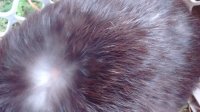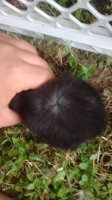MultipleAnimals
Chillin' with the herd
Hi Yall, I Thought I'd Update Y'all on the Lionhead Doe (same size as Cali Buck) being bred to my Cali Buck. She had 7 kits, 3 blacks, 4 whites. Well 1 black died(runt). But anyway, the kits are 18 days today, and the Whites are Pointed and the Blacks are Agouti Black(Silvery/Gray Hair Near Skin). Mom is Agouti Black, does this mean the Pointed Kits are carriers of Agouti?





